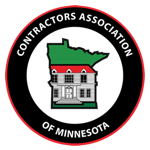MN Specific Law Changes – By Tim Johnson – Attorney at Law
| Good Morning:
I wanted to send out an update to explain some recent legislative changes. It was a very busy session with a lot of bills passed affecting the construction industry. Additionally, we’re seeing some changes in the world of insurance restoration I wanted to address as well. These are all pretty important, but if you’re too busy today to read it all today, scroll to the bottom for a quick summary. Legislative Changes
Insurance Restoration Issues
Quick Summary Too long, didn’t read?
Revisions should be made to your company’s (1) employee handbook; (2) subcontractor agreements; and (3) employment agreements. If you need your employment agreements and policies revised, please reach out and we can get that handled. Forgive me for the lengthy email – it was a legislative session like none I’ve ever seen. Disclaimer: This e-mail does not constitute legal advice, but rather is intended for informational purposes only. You should contact a lawyer (hopefully us) to review the impact of this information on your business. |










